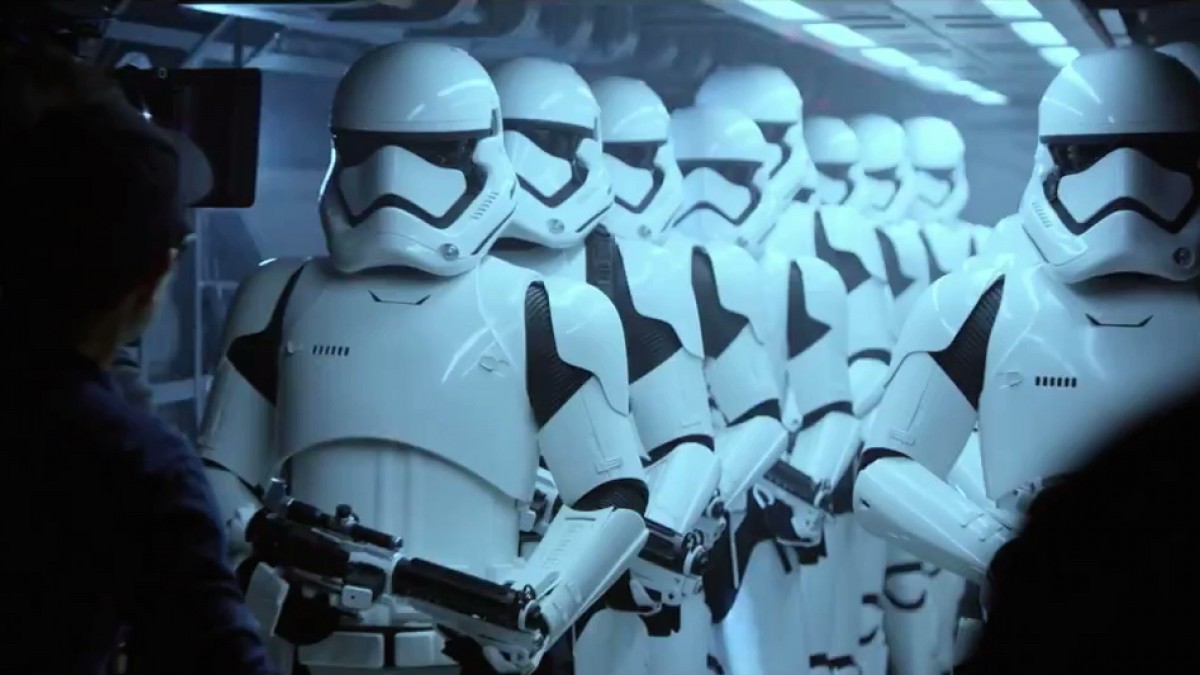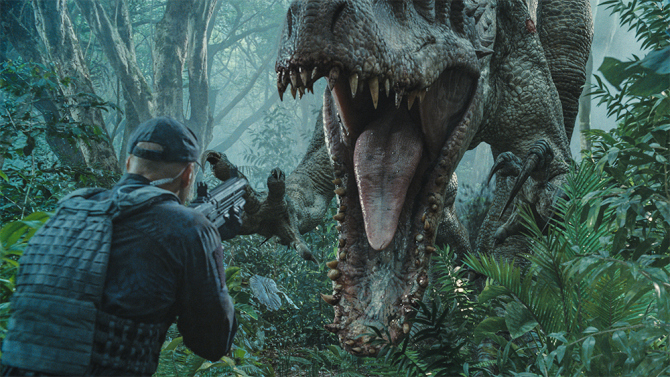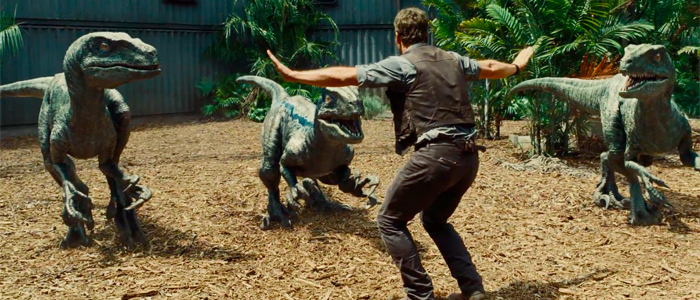Are “Star Wars: The Force Awakens” and “Jurassic World” actually remakes, not reboots?
Reboots and remakes seem interchangeable in this day and age. What, when it comes down to it, is the difference between the two? In practice, it’s getting harder to tell.
A reboot acts as a relaunch of a previous series - it reinvigorates or reinvents an old franchise to attract a fresh, young audience to a popular past project. This can mean a new take on a previously established series that distinguishes itself from predecessors with a new story angle, tone, or some degree of re-imagining. It can also mean, in the case of movies based on materials from other mediums (comics, books, etc), an adaptation of existing material that was not previously covered in an earlier version. For instance, X-Men: First Class (2011) took inspiration from an earlier point in the X-Men comic series than the original X-Men film trilogy, as part of a successful attempt to reboot the franchise in general.
A remake, in comparison, is a single movie remade for the purpose of bringing back essentially the same story for a new audience/new time. The result could turn into a very different movie with a whole new world-view, like the Stepford Wives remake (2004), or a nearly identical movie, such as the shot-for-shot remake of Psycho (1998). Remakes can also be about bringing a story to a new area or country—the Indian film industry regularly makes multiple versions of the same movie for regions that speak different languages. Instead of just importing them with subtitles, the US often remakes successful films or TV shows from other countries. We saw this in the case of the Swedish adaptation of The Girl With The Dragon Tattoo (2009) which was remade for an American audience in 2011; the Swedish Let the Right One In (2008) that led to the American Let Me In (2010) and the Danish TV drama The Killing (2007) which AMC remade in English, set in Seattle, for The Killing (2011).
Recently, reboots of popular franchises have taken two directions. First, they have attempted to add something new to an existing universe. This occurred, to much criticism, with Terminator Salvation (2009) and Terminator Genisys (2015). It also occurred to some extent with the new Star Trek franchise directed by J.J. Abrams, Star Trek (2009) and Star Trek Into Darkness (2013). Alternatively, reboots take a very familiar trail of narrative beats, such as in the case of the recent Star Wars and Jurassic Park franchise reboots, Star Wars: The Force Awakens (2015, also directed by Abrams) and Jurassic World (2015). This second pair of reboots have premiered to general-to-elated critical acclaim, widespread fan enthusiasm, and hundreds of millions of dollars.
Force Awakens and Jurassic World are young reboots with enough original content to make an argument for their reboot (not remake) status. Their filmmakers may use these faithful first movies as launching pads to carve their own paths in sequels, using the original content they have planted as seeds in their initial outings. But when these reboots begin by trading on both the narrative structure of their franchise beginnings and on nostalgia easter egg hunts, do they remain reboots? How are they any different from an actual remake? Are stealth remakes how we successfully reboot a franchise now?
By this point, with Force Awakens, you are in one of two internet camps: 1) STAR WARS IS BACK AND MY LIFE IS COMPLETE or 2) KILL THE INTERNET UNTIL IT STOPS RANTING ABOUT A STAR WAR. It’s amazing to see a movie be an actual event again, complete with costumed audience members, terrified spoiler avoiders (SAVE YOURSELVES, GET OFF THE INTERNET), and lines of people stretching across blocks. It’s already a given how many records Force Awakens will break, and Disney has a slew of sequels, tv shows, and merchandise planned that will be sure to send the haters off to find their own personal Dagobah until the onslaught ends.
But why does this movie work? Is it because J.J. Abrams, Hollywood’s other famous fanboy (Whedon and Colbert, I salute thee), has finally re-captured the best of what Star Wars was and is? Or did he succeed by co-opting a time-tested template?

Abrams should be given all possible credit: I can’t think of a single guy in Hollywood better suited to bringing back Star Wars. Abrams is a master of figuring out what an audience is most fond of and what they want to see change. He kept the practical effects, the music, the original characters, and all the references he could conceivably weave in. He made a Stormtrooper a black man (John Boyega, getting it done) and let that man and a white woman be the ones to wield the legendary blue lightsabers. He made representation undeniable (all of those POC and female extras!), got Harrison Ford to look like he’s having more fun than he’s had in years, and got us excited by a whole slew of new characters who feel as real and as powerful to us as Luke, Leia and Han did the first time we met them. But he did it by, in part, even making some of these characters semi-rabid Star Wars fans themselves (Rey and Finn, and possibly everyone else in the galaxy, are as awed by the mention of Luke, Leia, and Han as any of us) and by making us all beholden to a script structure that remixes the plot of Star Wars: A New Hope (1977) and features the original characters in roles we already know. Luke Skywalker is now a heartbroken, beardy Ben Kenobi-type; Leia has (thankfully) lost the gold bikini slave outfit and become the new (and barely utilized) Mon Mothma (She was in the movies but had more to do in the Extended Universe. She’s also awesome.), head of the resistance; and Han Solo is…older Han Solo. And we go from there, bouncing from little droid with the info we all need to Cantina music to odd and wonderful Yoda-type alien (Lupito Nyong’o’s Maz Kanata is one of the best characters in the movie) to a Millennium Falcon escape to someone being someone’s father to someone dying in a certain setting at the hands of a certain person they hoped to help to even a final run to blow up a giant planet-destroying big orb of doom (a character says that it’s not a Death Star, only to show that it’s just a bigger, more powerful Death Star). While there’s never a scene as horrifyingly derivative as the “KHAAAAAAANNNN” scream in Star Trek Into Darkness, it’s hard not to see Abram’s Star Trek foray as a trial run for Star Wars. It semi-feels as though Force Awakens is a better movie at the expense of the Star Trek reboot franchise, a franchise many lifelong fans initially hoped for but now seem to regard with a world-weariness (the filmmakers said the villain wasn’t Khan. We knew he was Khan. SPOILERS: BENEDICT CUMBERBATCH IS WHITE KHAN). In that franchise, Abrams picks a moment in time and alters it slightly in order to send familiar, beloved characters off on a new and crazy adventure. His mistake in the new Star Trek reboot franchise was throwing out much of what made the franchise work, from the philosophic tone to the space exploration itself. In Force Awakens, he changes the formula: instead of breaking time, Abrams makes it so that our heroes have forgotten the mistakes of the past and thus are destined to repeat them.
Force Awakens is not all remake, though: Boyega’s Finn gets the best story in the movie as a young Stormtrooper attempting to shake off his child soldier roots and become his own man. Daisy Ridley’s Rey is, yes, a female Luke Skywalker figure. But she stands as an almost feral powerhouse of a woman who goes from lost child, frightened of her potential, to the new hope (puns!) of her people (just please don’t be Luke’s daughter, please, please?). The escape sequence with Finn and Poe (a woefully underused Oscar Isaac) demands to be fleshed out into a full out bro-y road movie (spin off?!). Gwendoline Christie’s Phasma (why would anyone only give three-ish scenes to Brienne!), Maz, the Ben Solo backstory*, these are stories worth exploring and fleshing out more than Force Awakens does, and we can only hope the next two films will follow these original seeds further. While Abrams and co. mostly stick to formula in their script, they wildly succeed when they go in unexpected directions with their talented new cast. These are nuanced, often humorous, star-making performances. As someone who lived for the Extended Universe books and games as a kid, I mourn the stories that were lost but am excited for what all can be brought to life. That’s exactly my hope: that Abrams’ Star Wars entry will prove to be the worst of the new franchise. It’s a greatly entertaining and satisfying movie. But it’s one we’ve already watched much of before: I can’t wait to go somewhere new.

But there’s another 2015 blockbuster that is an even more persuasive remake-masquerading-as-reboot. Jurassic World, previously the year’s biggest film (although its records are swiftly being taken down by Force Awakens), is a healthy example of a reboot that is in fact a stealth remake. However, Jurassic World is far less stealthy than its fellow reboot, and its original content often falls flat as a result. Almost everything that is an attempt at new in Jurassic World does not work: from the Chris Pratt/Bryce Dallas Howard romance (He’s hot! He rides a motorcycle! He has no flaws! She’s got severe hair that gets more wild as she gets more agreeable! She’s never without her heels! She just needs to learn how to be a mother! Make them kiss) to the villain’s would-be dino army, nearly everything that could have worked as a distinguishing factor to help breathe new life into the movie weakened it (although Chris Pratt Raptor Squad will never not be great. DELTA I SEE YOU). The film’s only black guy is never actually named in the movie, which is a shame because Omar Sy is a king of kings. There’s a divorce plotline that never actually goes anywhere.The list goes on and on.
What worked for profits, and didn’t work as much for critics, was the movie’s willingness to live and die by co-opting the Jurassic Park (1993) story structure and easter egging like they’ve never easter egg’d before. The rules are clear: have two kids experience a dinosaur island for the first time; walk your heroes through the original Park entrance; create tension between the people in charge of the park (John Hammond/Claire Dearing) and the experts who actually work with the dinosaurs (the team of scientists/Owen Grady); make dinosaurs who should never have been made; have some idiot let the dinos loose; make dinos eat anyone who doesn’t deserve to live; have your heroes on the move a lot (preferably with dinos behind/around them); display the T-Rex front and center for your final showcase; make $200 million minimum not including merchandise. I would mention more specific examples of callback scenes, but there were so many that if you were playing an easter-egg themed drinking game, you’d be drunk before Indominus actually gets out.** The only scene that works as an original feature of the movie is a discussion of how the innovator’s need for bigger and cooler dinosaurs also means signing up for the deaths that will inevitably follow. The potential for dinosaurs escaping into the bigger world also holds promise. Hopefully, future sequels will do less living off of their pre-made checklist and will take a real walk on the wild side. Jurassic World is certainly a bigger, louder Jurassic Park. But that’s all it is.

These weren’t the first reboots and they most certainly won’t be the last. Spiderman famously is on its third webcrawler (and its third Aunt May. And its third high school setting. And its third…you get my drift). Ocean’s Eleven (2001), Charlie’s Angels (2000), Highlander (1986), a female AND male Ghostbusters, a non-Reynolds Green Lantern—you name it, it’s been or is being rebooted. And like many of the makers of these reboots, Trevorrow and Abrams both had difficult jobs. Revitalizing a pair of franchises that people hold dear to their hearts is an almost impossible task when those same fans look at sequels and think, “I’ve been burned before!” Trevorrow does a stunning job of using World to highlight our current blockbuster craze (BIGGER. LOUDER. MORE TEETH) and Abrams follows the Star Wars template so masterfully that at times his film feels more like Star Wars than Lucas’s original film (blasphemy). But it would be nice to see these movies learn how to stand more firmly on their own two feet. Say what you will about Lucas’ prequel series, but at least he didn’t want to repeat himself.
While some of the above statements may sound critical, I saw both multiple times and enjoyed them thoroughly (In particular, Force Awakens’ lead characters are, to me, heroes of the new millennium). But I enjoy watching these movies because I am, in part, enjoying fanfictions with better special effects capabilities. These movies are reviving franchises by largely relying on narrative beats from their franchise origins and making them look new.
But nostalgia can only do so much of the heavy lifting, nor does it have to be the only thing Hollywood trades on. Bond benefited in its latest reboot when Casino Royale (2006) decided to use Bond’s base character and explore why he became the alcoholic, misogynistic, action guy we know him to be. The 2005 Doctor Who reboot envisioned a universe wherein the Doctor is alone because he’s had to destroy his own people. Batman Begins (2005) created a whole new movement in film by owning the darkness that lies in a man who never could move past the cards life dealt him. These examples and others work best because people behind these reboots saw the source material as inspiration, not blueprint. There’s potential for this trend to change: given how much studios seem to love giving up and coming directors this kind of work (we can all look forward to Rian Johnson’s Episode VIII), there is a wealth of talent ready to breathe new life into these franchises.
But this kind of unlabelled remake is not a trick that can be pulled out forever. Eventually these reboots are going to need to stop using source material as templates to remix and rehash. This is the next generation: it’s time to start owning that truth.
* The Darth Solo kid plot twist is also one that has been done before, although it was in the now non-canon Extended Universe book series.
**I’d mark that as a spoiler but, really, are you surprised? This entire article is, in part, recapping decades-old stories.

